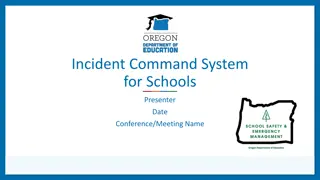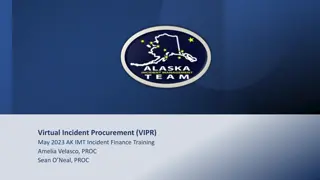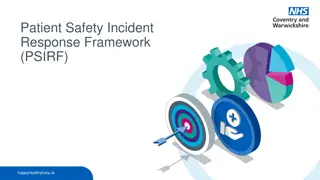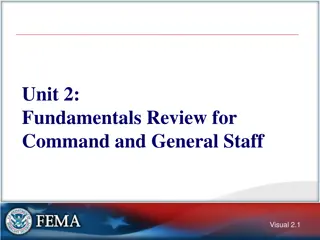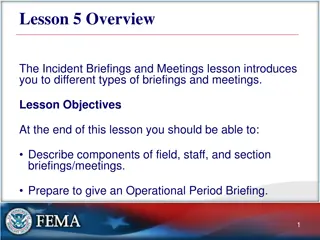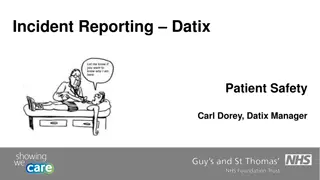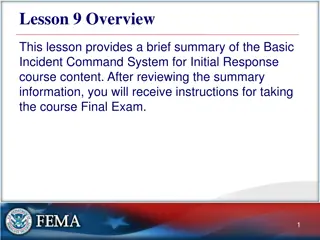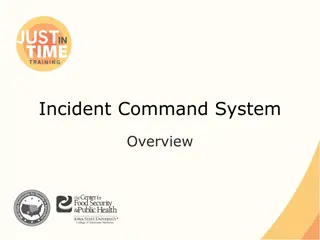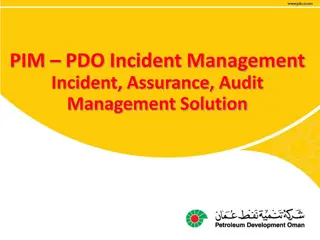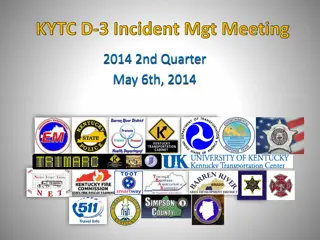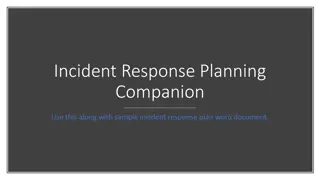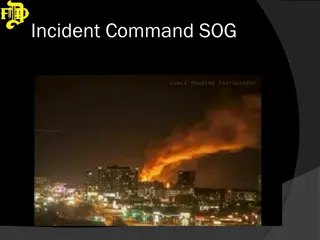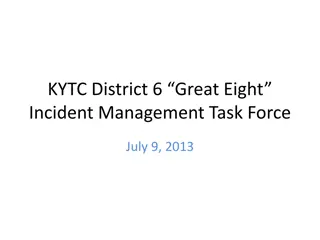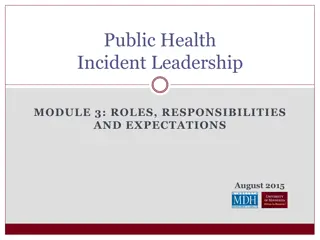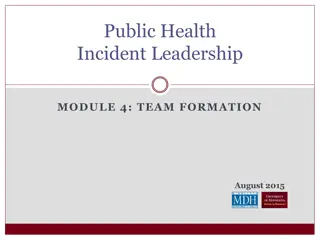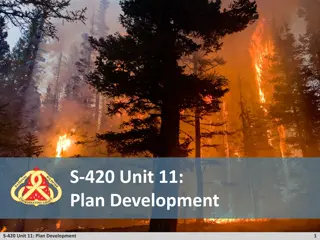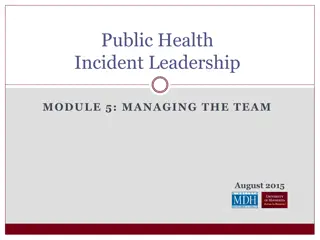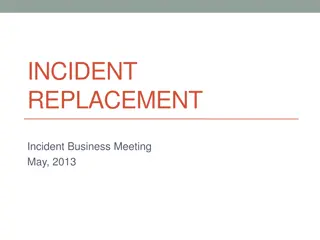Effective Communication Strategies in Public Health Incident Leadership
Learn about the importance of effective communication within emergency operations centers during public health incidents. Explore communication tools, techniques, and case examples of communication failures. Discover key aspects such as team communication, situational awareness, shared mental models, S-BARR briefing model, and closed-loop communication to ensure clear and efficient communication in crisis situations.
Download Presentation

Please find below an Image/Link to download the presentation.
The content on the website is provided AS IS for your information and personal use only. It may not be sold, licensed, or shared on other websites without obtaining consent from the author. Download presentation by click this link. If you encounter any issues during the download, it is possible that the publisher has removed the file from their server.
E N D
Presentation Transcript
Public Health Incident Leadership MODULE 2: COMMUNICATION August 2015
Objectives Define effective communication within the department emergency operations center Describe communication tools and techniques
Discussion Has communication ever failed in previous responses or exercises? Can you share some examples?
Team Communication Distilled Skill Model Situational Awareness Common Language S-BARR-Out CLC-IN Shared Mental Model Who Me Individual You Individual Us Team
Areas of Communication Communication Delivery Intended audience Mode of communication Delivery technique Information Exchange Sending Recurring Verifying Validating
Situational Awareness Knowing current conditions affecting team s work Knowing the status of a particular event Knowing the status of the communities affected Understanding the operational issues affecting the team Maintaining mindfulness affects my own work
Shared Mental Model A shared mental model is the perception of, understanding of, or knowledge about a situation or process that is shared among team members through communication. Sustained by: The process of planning Team decision-making Vocalizing
S-BARR: Situational Briefing Model S = Situation What s the situation? B = Background How did we get here? (the context) A = Assessment What do I think is the problem? R = Recommendation What are we going to do to fix the identified problem? R = Request What do you want me to do?
Creating High Reliability Skill Model Briefing Huddle Hand-offs Callouts Who? Planning Problem Solving Process Improvement Team or subsets 2 or more people (small group) Team, individuals
Briefings Form the team Designate/Delegate team roles and responsibilities Establish climate and goals Engage team in short and long-term planning
Huddles Problem Solving Hold ad hoc, touch- base meetings to regain situational awareness Discuss critical issues and emerging events Anticipate likely contingencies Assign resources Express concerns
Hand-offs The transfer of information (along with authority and responsibility) Includes an opportunity to ask questions, clarify, and confirm.
Callouts Sharing information before the next scheduled briefing Provide quick status update or critical new information Brief, clear and specific
Activity Form groups of 3 4 people Read the scenario Demonstrate the use of the assigned communication tool or technique 10 MINUTES
Framework for Public Health Incident Leadership Skills Behaviors Do Performance Skills Leadership Knowledge Cognitions Think Situation Monitoring Communication Attitudes Affect Feel Mutual Support Attitudes Knowledge



